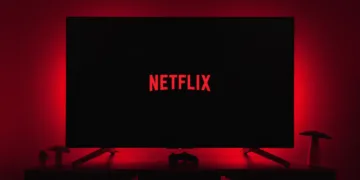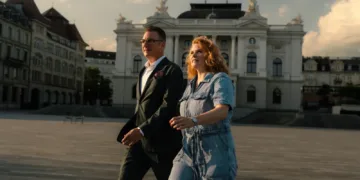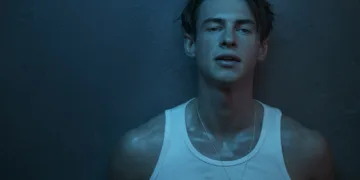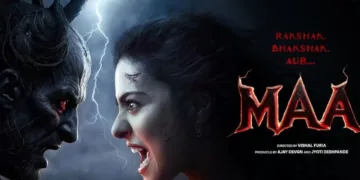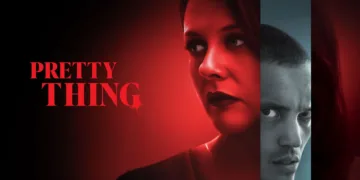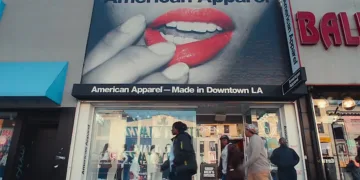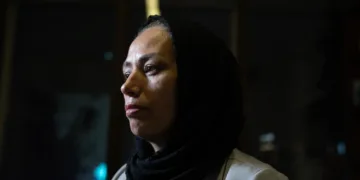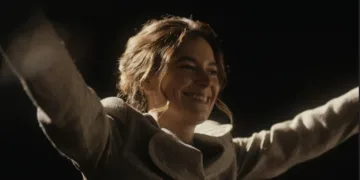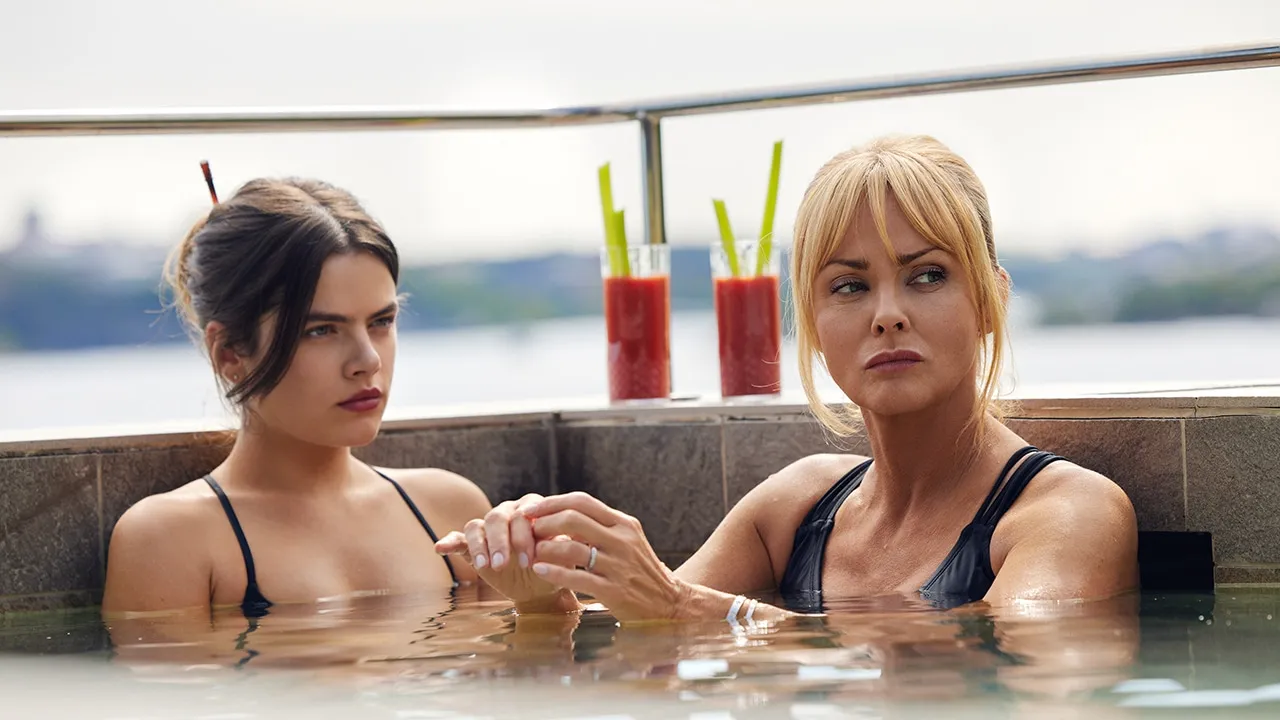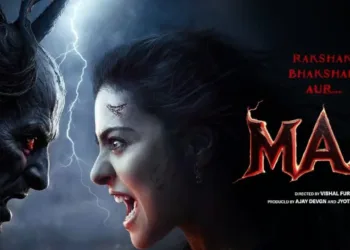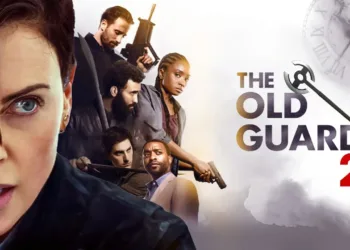The year 2000 arrives in Barracuda Queens less as a historical moment and more as a pristine aesthetic. Five years have passed since the Djursholm girls first treated their wealthy suburb as a personal bank, and we find them ostensibly entering adulthood. Lollo Millkvist’s return from Paris, however, signals that maturity was merely a temporary diversion.
This second season positions itself within a specific kind of turn-of-the-century malaise, where the constraints of mundane jobs and parental dependence feel more suffocating than the threat of incarceration. Their ambition is not for survival but for a self-curated lifestyle, beginning with an opulent apartment they cannot afford through legal means.
In a move characteristic of the streaming era’s need to perpetually raise the stakes, the series trades suburban mischief for the far more glamorous world of high-stakes art theft. This calculated pivot reframes the Queens’ rebellion, packaging their entitled boredom as a sophisticated criminal enterprise.
Yet, a jarring flash-forward that opens the season—Lollo bound to a chair, interrogated by armed men—shatters the lacquered surface. It serves as a stark reminder that while the targets have become more refined, the consequences may have become brutally real.
The Art of Consequence-Free Rebellion
The decision to pivot from suburban burglary to the rarefied world of art theft is a telling evolution for Barracuda Queens. It’s a move that elevates the stakes aesthetically, if not emotionally. The girls now target cultural capital, aiming to liberate an Anders Zorn painting from the Thiel Gallery.
Their entry point is Amina, whose position inside the gallery provides the necessary intelligence. This classic heist setup allows the series to reframe its protagonists not as petty thieves, but as stylish insurgents operating within the very institutions they resent.
Their motivation, however, remains grounded in a potent form of privileged ennui. These are not revolutionaries; they are aspiring property owners. The crime is a direct means to afford an eight-room apartment, a way to purchase an adult identity they feel entitled to. This grand ambition is given a dash of relatable pettiness through Amina’s secondary goal: humiliating her tyrannical boss. It’s a neat justification that makes their entitlement almost palatable.
The execution of these heists slides comfortably into the realm of fantasy. The young women consistently outmaneuver professional security and seasoned criminals with a casual effortlessness that defies belief. This isn’t a procedural exploring the gritty details of a theft; it is a power fantasy where the universe bends to the will of its protagonists.
The narrative repeatedly builds tension only to diffuse it with a near-miraculous escape, creating a frictionless viewing experience. For the Barracuda Queens, risk is a performance, not a reality. Jeopardy is consistently introduced and then just as consistently whisked away, ensuring that their rebellion never costs them anything of actual value.
Growing Up is Optional
A five-year time jump is a promise of evolution, a narrative device suggesting that characters have lived, learned, and changed off-screen. Yet in its second season, Barracuda Queens uses this device mostly for set dressing. Lollo Millkvist returns from Paris not as a woman transformed by experience, but as the same impulsive catalyst, her restlessness simply repackaged with a better haircut.
She remains the agent of the group’s regression, pulling her friends back into a life of crime with an argument that appeals to their shared boredom. Her character suggests a pointed commentary on insulated privilege: for some, adulthood is not a developmental stage but simply a new backdrop for old habits.
This commitment to stasis is most apparent in the treatment of Mia, the group’s former moral compass. In the first season, her hesitation gave the girls’ criminal activities a flicker of internal conflict. Now, she is functionally a bystander in her own story, her cautionary notes delivered with such little conviction they barely register. Her arc is not just paused; it has been written out in favor of frictionless group consensus.
Similarly, Amina’s role is reduced to that of a plot key, her personal story frozen after her initial induction into the group. The Rapp sisters, Klara and Frida, continue to operate as a stylish, indistinguishable unit, their individual ambitions sublimated into the collective desire for an apartment.
What becomes clear is that the show is not interested in the individual journeys of these five women. Instead, the central character is the group itself: its intoxicating, insular chemistry is the series’ true engine.
The familiar bonds, the lavish hangouts, and the shared defiance are what the narrative protects at all costs. The show willingly sacrifices individual depth to maintain the integrity of the clique, presenting a hermetically sealed world where personal growth is less important than preserving the intoxicating vibe of the collective.
A Flawlessly Curated Void
Visually, Barracuda Queens is an exercise in meticulous control. Its reconstruction of the year 2000 is flawless, a high-definition museum of millennial artifacts where every low-rise jean, Nokia phone, and sterile minimalist interior is perfectly placed.
The cinematography is clean, the costumes are precise, and Stockholm glows with a cool, detached elegance. This is a production that understands the power of a strong aesthetic, delivering a visual identity so polished it feels algorithmically generated to appeal to a global audience hungry for palatable nostalgia.
Yet for all its visual precision, the world feels strikingly hollow. The period setting functions as decorative wallpaper, a mood board of a bygone era rather than a lived-in reality with its own cultural texture. The show presents the year 2000 without its anxieties, its politics, or its spirit; what remains is a beautiful but sterile showroom.
This emotional distance is reinforced by the direction, which maintains a consistent, elegant sheen across all six episodes. Amanda Adolfsson’s steady hand excels in capturing the kinetic energy of the group, but it keeps individual moments of emotional crisis at a safe, observational distance.
The pacing is relentlessly brisk, designed for the modern binge-watch, with short episodes that push the plot forward without leaving much room for contemplation. The result is a narrative that feels as formulaic as it is fast. The soundtrack follows suit, providing a functional backdrop of period-appropriate tunes that support the atmosphere without ever defining it, save for the occasional, effective needle-drop that closes out an episode.
The High Gloss of Moral Decay
At its heart, Barracuda Queens presents crime not as an act of desperation, but as the ultimate luxury good. The central motivation for the group is a potent strain of boredom that can only be cultivated in extreme comfort. They steal to fund a lifestyle, to combat the psychic terror of having no real problems.
The series uses this premise to construct a world where privilege is a superpower, an invisible forcefield that deflects any meaningful consequence. Their wealth and social standing are not just part of their characterisation; they are the central mechanic that makes the plot possible, insulating them from a justice system that exists for other people.
The show wraps this cynical premise in an intoxicatingly glamorous package. The heists are fun, the camaraderie is infectious, and the aesthetic is impeccable. By presenting these morally bankrupt actions with such stylistic flair, the series places the viewer in a complicated position.
It dares you to be entertained by the very entitlement it purports to critique, blurring the line between satire and aspiration. Are we laughing at these girls, or do we secretly want to be them?
This ambiguity is the show’s most defining feature. It refuses to take a clear moral stance, populating its universe with selfish art dealers, negligent parents, and disloyal boyfriends, creating a landscape where the Queens’ behavior feels almost normative.
The narrative’s steadfast refusal to truly punish its protagonists becomes its most biting statement. It offers a cynical but perhaps honest reflection of a world where for a select few, the rules are merely suggestions and crime is just another way to get what you want.
Barracuda Queens Season 2 Released globally on Netflix on June 5, 2025.
Full Credits
Director: Amanda Adolfsson
Writers: Hugo Rehnberg, Camilla Ahlgren, Sofie Forsman, Tove Forsman, Veronica Zacco
Producers: Frida Asp, Fatima Varhos
Executive Producers: Frida Asp, Fatima Varhos
Cast: Alva Bratt, Tea Stjärne, Tindra Monsen, Sandra Zubovic, Sarah Gustafsson, Izabella Scorupco, Johannes Bah Kuhnke, Carsten Bjørnlund, David Book, Mirja Turestedt, Editha Domingo, Meliz Karlge, Michaela Thorsén, Gino Estéra, Richard Forsgren
Director of Photography (Cinematographer): Ragna Jorming
Composer: Joakim Åhlund
The Review
Barracuda Queens Season 2
Barracuda Queens is a triumph of style, offering a sleek, entertaining, and effortlessly bingeable ride through a Y2K Stockholm. Its exploration of privilege is a visual feast, but the meal itself is low on nutrition. The series prioritizes vibe over substance, resulting in a narrative where character development is stalled and genuine tension is absent. It is the perfect confection for the streaming age: beautiful, fast-moving, and ultimately hollow. While it flirts with social critique, its heart belongs to the glamour, making it a fun but forgettable escape.
PROS
- A visually polished Y2K aesthetic with strong costume and production design.
- Fast-paced, bingeable episodes make for an easy and entertaining watch.
- The chemistry between the five leads creates a strong sense of group camaraderie.
CONS
- A near-total lack of consequences for the characters removes any real sense of tension or stakes.
- Character development is stagnant, with most protagonists remaining emotionally unchanged.
- Thematic ideas about class and privilege are raised but explored only on a superficial level.


















